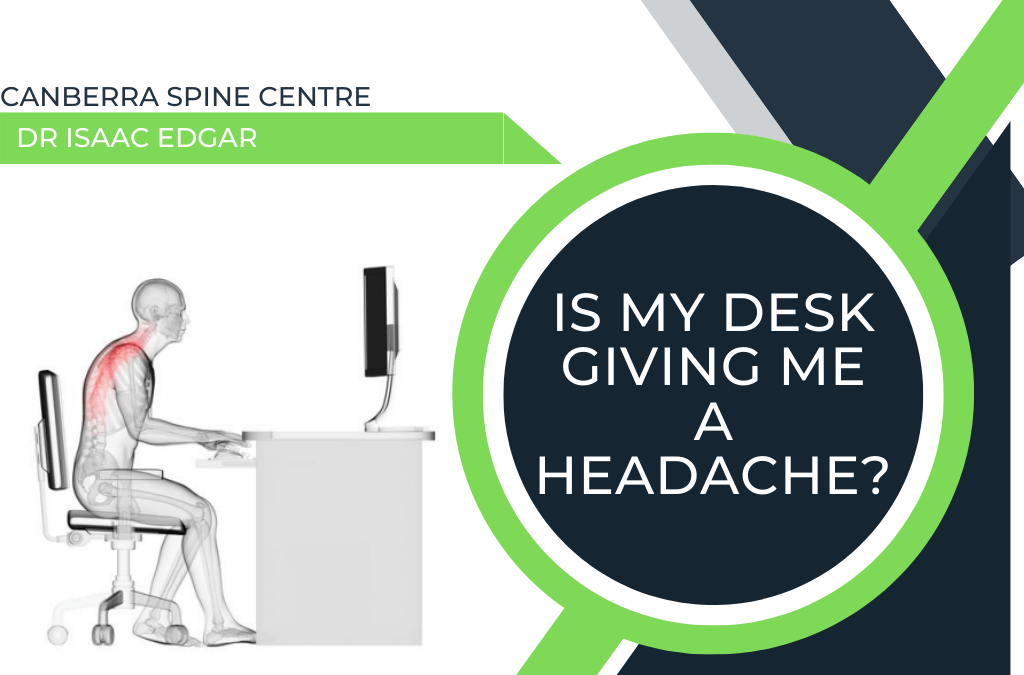
Are you someone who suffers from headaches? Have you ever spoken to someone and said ‘I just get a normal amount of headaches?
Headaches, and more importantly headaches at work when you are sitting at your desk are not simply a normal part of life.
Over the past 2 decades, but especially over the past two years our way of life has been changing. More than ever the community is working from behind a computer screen, working from home and working with poor ergonomics.
Regular headaches shouldn’t be a part of our regular daily life and today I want to discuss with the community how poor work ergonomics and desk posture can be linked to work related tension headaches. And some tips to help improve this.
How Does this Happen?
Sitting behind a desk all day, working very long hours, staring at computer screens for example can be extremely detrimental for our physical and mental health.
In most offices we are very sedentary for most of the day, combine this with highly strung and stressful jobs and our work can take a big toll on our body.
Sitting at a POORLY set up desk for a long period of time can cause a build-up of tension in our back and neck muscles, can irritate, and damage our nervous system and create pressure in our spinal cord. The result of this can be headaches and chronic tension headaches.
Cervicogenic Headache/Tension Headache
Cervicogenic and tension headaches are headaches that originate from the neck. Prolonged sitting and excessive computer use are common causes of cervicogenic headaches, which is why many office workers suffer from cervicogenic and tension headaches.
Any posture that irritates the cervical spine or sends the neck muscles into spasm can lead to cervicogenic headache.
The most common and the most provocative posture that you should try to avoid to prevent cervicogenic headaches from occurring, is a poking chin posture, or a forward head posture.
What is poor desk setup?
Tension is created through the body when:
- The desk and computer screen are too high or low
- The computer screen is too close or too far away from our face
- The monitor is tilted too far
- Our chair doesn’t have arm rests
- Our chair doesn’t have any lumbar support
- Our keyboard is too far away our arms/hands
- Our seat is too high or low
What are the basics of best desk posture and setup?
- Feet are flat on the floor
- Hips, knees, and ankles should be at roughly 90 degrees
- Your seat base should be long enough to support your thighs (taller people), but short enough to allow your bottom to be positioned at the back of the chair (shorter people)
- Chair should have adjustable seat height, backrest height and backrest angle at the least, while adjustable seat angle and back rest spring rate also are helpful.
- The angle at your elbows should be near 90 degrees.
- Your forearms and hands should be parallel to the floor as your reach for your keyboard.
- The horizontal line from your eyes should land somewhere between the top and middle of your screen.
- A sit-stand desk helps you to change your posture and loads regularly.
A set up like this will help to reduce loads on your spine and prevent spine-related issues such as cervicogenic headaches
What should I do?
The Chiropractors at the Canberra Spine Centre specialize with cervical tension nerve irritation and joint dysfunction. If you are suffering from headaches at work this is not normal, and you should seek help.
Not all headaches will be caused by your ergonomic set up however some may be helped by improvements to the function of your spine and nervous system.
The chiros at the Canberra Spine Centre also provide a service where they will come to your office and assess your workplace and advise on changes that can be made.
For more information on correct ergonomic set up, tension headaches or to book a consultation please call us on (02) 6257 9400.
If you would like some more information about the spine and nervous system and how it relates to your health, please check out the other articles on our Facebook page or go to our website: www.spinecentre.com.au.
